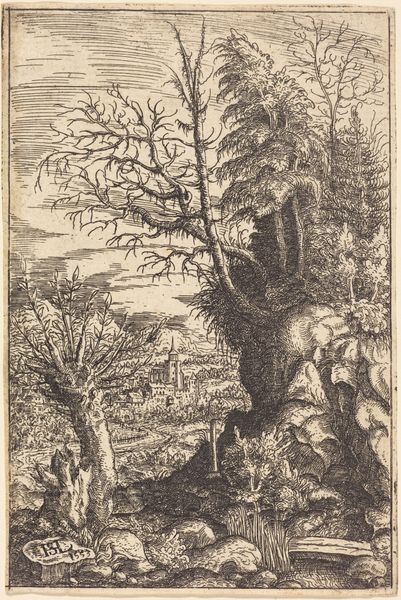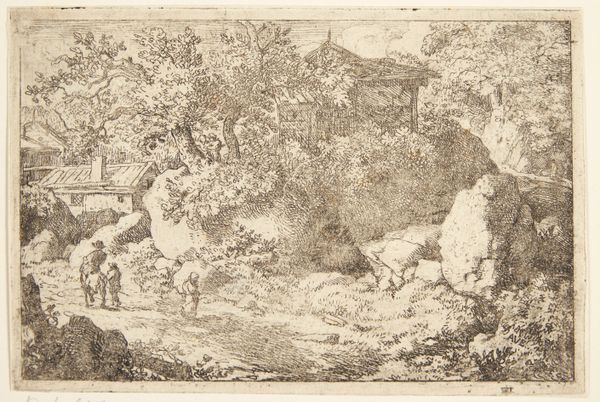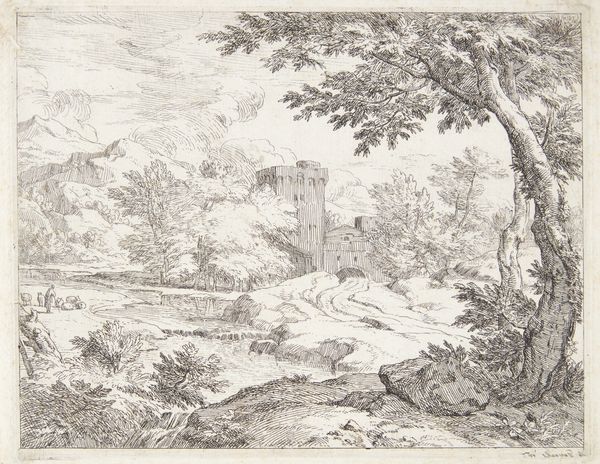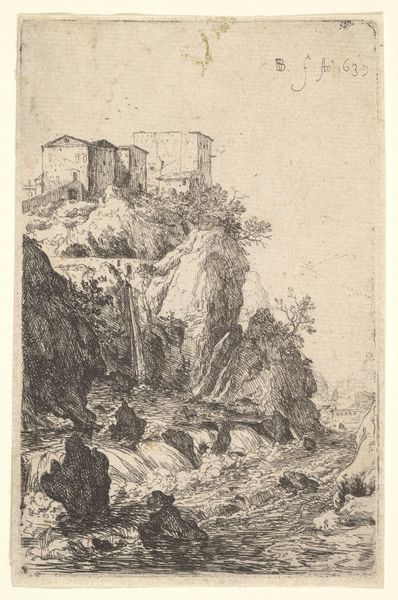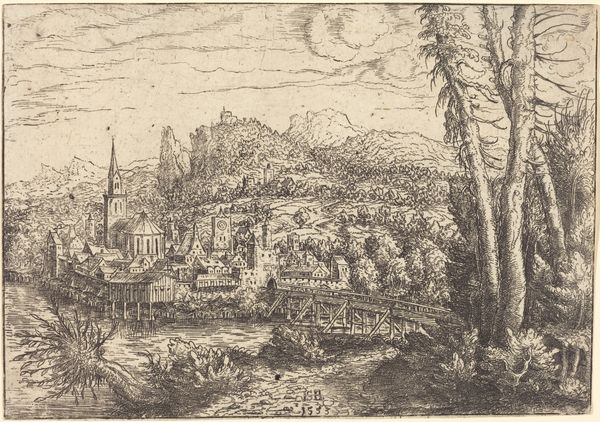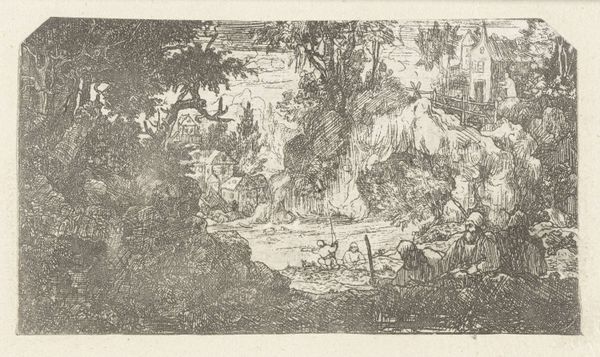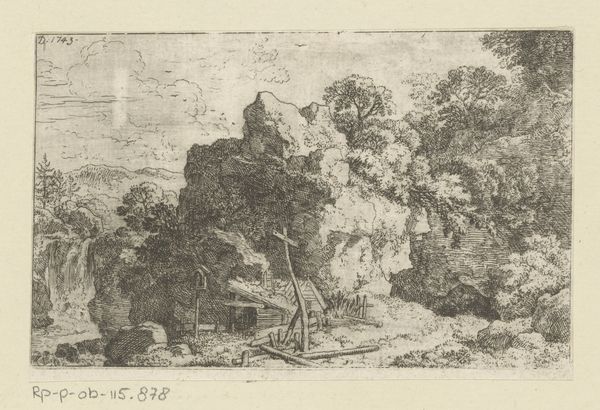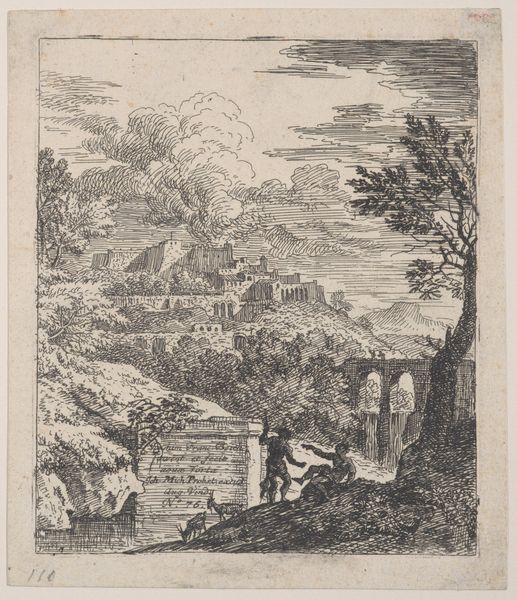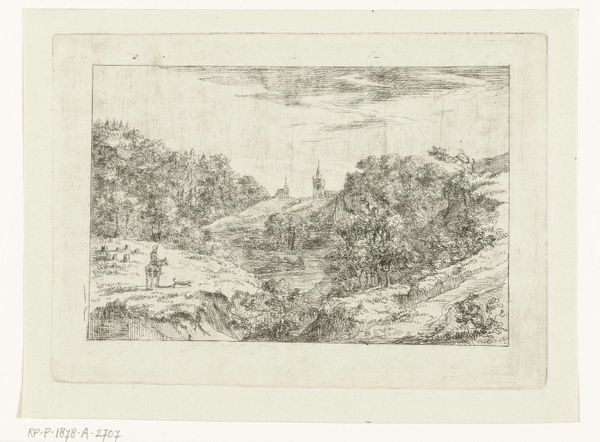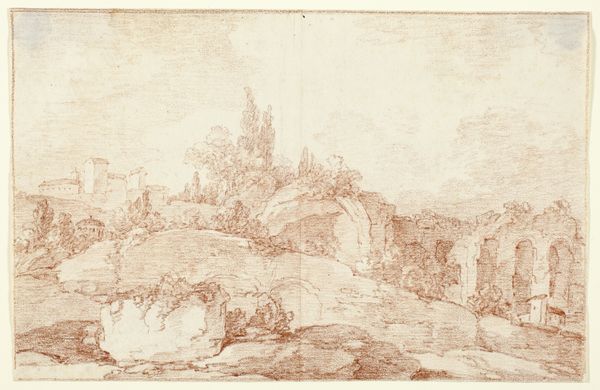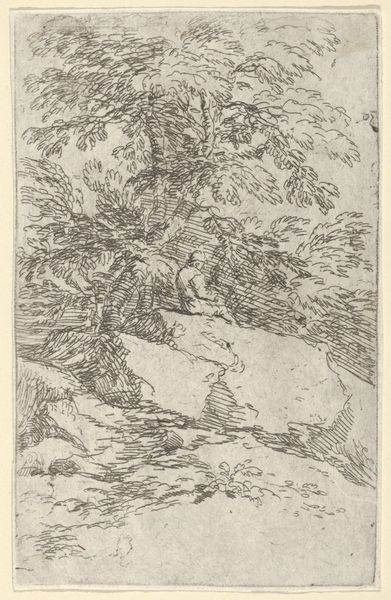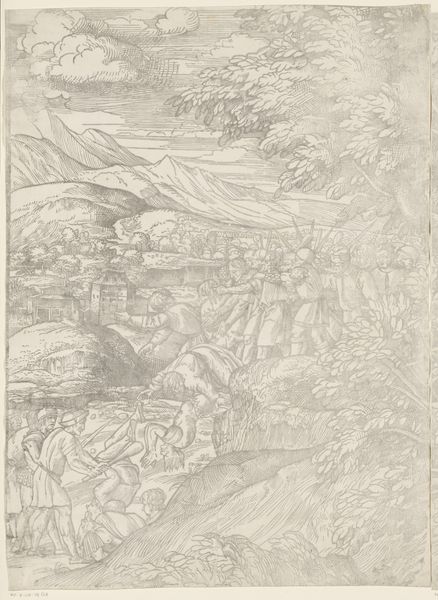
print, etching
#
pen and ink
# print
#
etching
#
landscape
#
figuration
#
geometric
#
history-painting
Dimensions: plate: 23.5 x 18.9 cm (9 1/4 x 7 7/16 in.) sheet: 40.9 x 33.8 cm (16 1/8 x 13 5/16 in.)
Copyright: National Gallery of Art: CC0 1.0
Curator: We’re looking at “Palatin,” an etching by Anton Lehmden, created in 1960. It’s a striking landscape, using pen and ink. Editor: My initial reaction is one of ruin and melancholy, the piece immediately reminds me of classical structures being overtaken by the wild. The intense detail somehow amplifies the decay. Curator: Lehmden was fascinated by ruins and architectural forms, and their intersection with landscape. Remember he was associated with the Vienna School of Fantastic Realism and later involved with the creation of the village of artists, Deinste. “Palatin” absolutely showcases that preoccupation. In many ways it anticipates the issues we grapple with today, concerning architectural intervention, the effect of human presence upon the natural environment. Editor: Yes, there is a powerful symbolism in the juxtaposition of the ordered geometric shapes of the brickwork against the riotous, untamed flora. I feel a profound cultural weight; each eroded brick a testament to time, an emblem of what was. Does the term 'Palatin' hold significance here? Curator: The Palatine Hill, in Rome, was the dwelling place of emperors; by titling the work ‘Palatin’ he points to that relationship of power and place, also to history-painting. There is a suggestion of great ambition consumed by the inevitable forces of time, politics and neglect. Editor: So the piece isn't just documenting ruin, but speaking to the impermanence of power. It invites a meditation on legacy itself and on civilization's fragility. One can read the imagery almost like a memento mori for empires. The sharp detail contrasts powerfully with a muted almost hazy palette which invites that solemn mood. Curator: It seems Lehmden wants us to consider how these monumental creations become ruins, their significance reshaped by nature. The dialogue becomes about the cyclical relationship between rise and decline and also humanity’s impact on the landscape. Editor: Thinking about how it marries those elements really unlocks this intricate piece, thank you. Curator: You’re welcome, I feel I see this differently now too, that consideration of iconography opened things up.
Comments
No comments
Be the first to comment and join the conversation on the ultimate creative platform.
